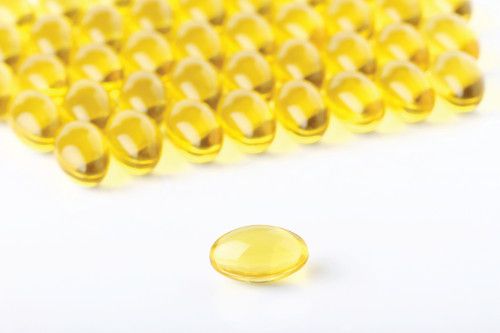10 Years of Omega-3 Science: From Then to Now
How omega-3 science has evolved over the past decade
Photo © iStockphoto.com/SherSor

By Gerard Bannenberg, Director of Compliance & Scientific Outreach, Global Organization for EPA and DHA Omega-3s (GOED)
Scientific knowledge of omega-3 long-chain polyunsaturated fatty acids (omega-3 LCPUFA), obtained by observation and experimentation, has evolved tremendously over the past 10 years, with scientists eager to understand omega-3 LCPUFA-in particular, eicosapentaenoic acid (EPA) and docosahexaenoic acid (DHA). This fascination with omega-3 LCPUFA has led to the publication of more than 14,000 new studies during the period 2008–2017.
In this article (the first in a two-part series), I will explore how our understanding of omega-3 LCPUFA has evolved over the past decade.
Development
Our understanding of the role of omega-3 LCPUFA in tissue development, particularly during gestation, has progressed in the past decade. Whereas in older studies, the role of omega-3 LCPUFA was primarily viewed as a structural component of cellular membranes (in particular given the high local concentrations in specific tissues such as brain and retina), new insight has been obtained that omega-3 LCPUFA are also important for the development of other tissues that are not characterized by extremely high levels of omega-3 LCPUFA, such as the hormone-producing alpha-cells and beta-cells in the pancreas, the development of the peripheral nervous system, and the lung.
These advances have implications for neonatal and infant health outcomes and the reasons for sufficient dietary omega-3 intake. Sufficient dietary intake of omega-3 LCPUFA during pregnancy has been shown to have numerous benefits, including a small but positive influence on gestational length, a marked reduction in the incidence of preterm birth (prior to 34 weeks gestation), and positive effects on maternal health. Interestingly, specific needs for both arachidonic acid (AA) and DHA in tissue development seem to happen during defined periods of fetal development, suggesting the need to guarantee dietary sufficiency of various specific PUFA in the feeding of neonates that have not yet completed their development, especially those born pre-term. Research is also addressing the possibility that perinatal epigenetic effects of omega-3 LCPUFA status are of relevance to infant development, with effects that may last into childhood and adulthood.
Omega-3s and Evolution
From a biological point of view, it has been demonstrated that the transfer of omega-3 LCPUFA from organisms that produce these fatty acids (marine algae and bacteria) upwards the food chain occurs at a higher efficiency than that of macronutrients. This suggests that animal species at all levels of the food chain can somehow sense the presence and levels of essential PUFA available in prey, and that acquisition of essential PUFA is very important for their survival.
In their evolution, hominins developed a layer of body fat during the third trimester of pregnancy that can store sufficient amounts of DHA to support a newborn’s development, and in particular its large brain. The very high demands for brain-selective nutrients such as DHA and AA by humans is quite unique among animal species, and evolutionary biologists have maintained a lively debate in the past few years about how this has come about. Well-argued theories now hold that the early human race has developed on the context of a regular access to foods containing a range of brain-selective minerals (iodine, iron, zinc, copper, and selenium) and PUFA, plentifully found at freshwater and marine shores.
Many people are not getting enough pre-formed DHA. Whereas alpha-linolenic acid (ALA) and linoleic acid (LA) are essential fatty acids for the biosynthesis of the omega-3 and omega-6 PUFA families, respectively, the direct ingestion of sufficient daily dietary doses of pre-formed DHA and AA may be a physiological necessity determined by our evolutionary history.
Modern Intake
The very different conditions in which most people today live their lives, compared to our hominin ancestors, may impede our ability to acquire the daily omega-3 LCPUFA intake that most people need. Recent epidemiological studies have indicated that a large part of the world population has low-and in a significant portion, abysmally low-daily intake of omega-3 LCPUFA. What’s more, low global intakes of these fatty acids are associated with tens of millions of preventable deaths from non-communicable diseases every year.
Interestingly, on the backdrop of this awareness, molecular genetics is making incremental strides in demonstrating the enormous human ethnic variation in the essentiality of the omega-3 PUFA ALA. Some genetic polymorphisms that permit the efficient conversion of ALA in some traditionally vegetarian populations are nearly totally absent in other traditionally obligate carnivorous societies that obtain all of their EPA/DHA directly from dietary sources.
In genetically admixed populations (a major part of today’s societies), it is, without testing omega-3 fatty acid status, nearly impossible to say with certainty who will benefit from dietary intake of EPA/DHA and who will be healthy on a vegetarian diet. The situation is more complex in certain life stages where demand for specific fatty acids may be enhanced, such as for DHA and AA in pregnancy.
Genetic studies may ultimately lead to a redefinition of the essentiality of ALA, since ALA will not be essential for individuals unable to convert ALA; for these people, EPA and DHA intake are effectively essential. Ten years ago, the term “conditional essentiality” was coined, referring to specific life stages during which EPA/DHA would be essential, and the foundations of a molecular understanding supporting this term have certainly been advanced today.
A lot of the good news about omega-3 LCPUFA activity for the body may in fact be a reflection of restoring endogenous tissue levels that were poor from the beginning, whether determined in cells, experimental animals, or in human beings. How to best assess and address nutritional deficiencies that are global in nature, but with a marked inter-individual variation in genetic components and dietary habits, is a main line of evolution.
Omega-3 Challenges
The past few years have also seen a marked recognition of the challenges that nutritional scientists face in assigning biological activity to specific nutrients, as is the case for PUFA. In contrast to randomized controlled intervention studies of drugs, which function on a non-existing background of the test substance in the body and the diet, controlled trials with nutrients are extremely difficult to carry out.
In the case of omega-3 LCPUFA, the reasons for this have been reviewed, and limitations more clearly defined, allowing for a better understanding of how to carry out suitable intervention studies and avoid sub-optimal study designs. This includes measuring baseline omega-3 levels and actual absorption and distribution of dietary or supplemental fatty acids. Still, and likely to be seen repeated over the coming years, the understanding of the role of omega-3s in human health starts out with small studies that are frequently of observational nature and are gradually scaled to larger study groups to better control the host of variables that plague nutritional intervention studies.
In the Body
In the past 10 years, studies have been carried out to better characterize the distribution of omega-3 LCPUFA in the body. Once ingested, the fates of EPA and DHA are quite distinct, displaying different kinetics in the incorporation into different, but overlapping, pools of lipids in distinct cell types.
Detailed studies of tissue distribution in rats have confirmed that the distribution of individual PUFA species varies tremendously between tissues, with extremes for DHA levels being 78-fold higher in brain compared to adipose tissue, and for EPA being 780-fold higher in testes than in adipose tissue. Surprisingly, skeletal muscle may contain the largest pool of DHA.
Marked inter-individual differences in people have furthermore been documented in studies carried out in the past few years that aim to stratify people based on their omega-3 status.
Risk stratification based on PUFA membrane composition has become a very promising line of research for prediction of disease risk, especially with respect to non-communicable and lifestyle-related chronic illnesses that are afflicting billions of citizens today. On average, marked increases in blood levels of EPA and DHA can be achieved after several weeks of sustained daily intake. A period of three months of supplementation seems to be an acceptable period to adjust a low and insufficient level to one corresponding to a level that is correlated with significant reduction in risk for chronic inflammatory disease.
Testing for Fatty Acid Levels
Given large inter-individual responses to changes in omega-3 LCPUFA intake, the only way to confirm absorption and membrane incorporation (and compliance in case of intervention studies) is by testing actual fatty acid levels in the body. The approach that has been developed in recent years is by measuring the sum of EPA and DHA as percentage of fatty acids esterified in the red blood cell membrane phospholipids (or similar approaches). Interestingly, this “omega-3 index” shows good predictive value for high and low risk for a variety of disorders that afflict mankind, in particular those that have a chronic low-grade inflammatory component.
Several layers of regulation ultimately define tissue content of omega-3 LCPUFA. A few factors that have been shown to be important are the absolute amounts of daily ingested omega-3 LCPUFA, the efficiency of fat digestion, the regulatory feedback of highly unsaturated fatty acids on the enzymes that convert ALA into EPA and DHA, and the actual usage of omega-3 LCPUFA. The latter includes the non-enzymatic turnover of PUFA (for example by oxidation) and by enzymatic pathways (used for energy generation and conversion into lipid mediators after release from membrane phospholipids).
How the levels of EPA and DHA in distinct lipid pools relate to health and disease is still difficult to understand since the body is extremely complex and given the difficulty in taking samples from most organs to address this relationship in human intervention trials.
The Modern Omega-3 Supply
Relatively few food products contain substantial levels of omega-3 LCPUFA, nearly all originating from the marine food chain. Over the past 10 years, a wealth of knowledge has become available of the presence and capacity in many distinct organisms to biosynthesize EPA and DHA.
Ten years ago, the biotechnological application of using the bacterial polyketide synthase mode of producing EPA and DHA was developed. Now, the capacity to produce omega-3 LCPUFA has been expanded to higher plants, in which omega-3 LCPUFA, such a stearidonic acid and DHA, can be produced.
Land-based omega-3 LCPUFA production is a tremendous biotechnological accomplishment, completely changing the nature of evolutionary biology of humans from this decade into the far future. Critical in achieving this was the science in overcoming product-mediated inhibition of gene expression of the many heterologous expressed enzymes needed to reproduce a functional biosynthetic pathway for omega-3 LCPUFA production in higher plants, from which seed oils can be obtained at industrially relevant levels. If this can be accomplished, there is no end to imagining what science will be able to achieve in the next decade.
Author's Note: I regret that it has been impossible to highlight a more complete spectrum of scientific discoveries and advancements of the past 10 years. References that support the mentioned scientific developments can be obtained from the author via e-mail at gerard@goedomega3.com. More information on the role of polyunsaturated fatty acids in health can be found at Fats of Life (www.fatsoflife.com).
Also read:
Omega-3 Discoveries: New Lipids, New Benefits
2016 Omega-3 Market Update: Fish Oil, Krill Oil, Astaxanthin, and More
Widespread Omega-3 Usage Could Save €12.9 Billion in Annual EU Healthcare Costs, Study Suggests
























